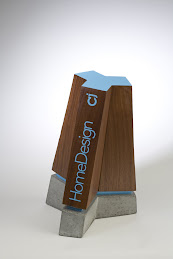One thing to remember out pouring a counter countertop is that your mold should be properly supported and level. A couple sheets of plywood over some sturdy sawhorses will do the trick. I built a rolling table with leveling adjusters.
 Alright, double check that all of the materials are weighed out and ready to go. I have a mixer, but if you don't they are cheap to rent at the local hardware store.
Alright, double check that all of the materials are weighed out and ready to go. I have a mixer, but if you don't they are cheap to rent at the local hardware store.
*Important note: The mixture should be large enough for the batch of concrete you want to make. Mine was a little too small and I paid for it with poor mixing. I ended up adding more water and water reducing admixture to get things mixed.
 The concrete was placed into the forms by hand being sure to press the first layer in well. That prevents air pockets on what will be the surface. A pad sander without sandpaper works well to vibrate the sides.
The concrete was placed into the forms by hand being sure to press the first layer in well. That prevents air pockets on what will be the surface. A pad sander without sandpaper works well to vibrate the sides. Since the concrete did not get mixed well, we had to pick out the clumps. Although you can not see them in the final piece, poor mixing lowers the strength and makes cracking more likely.
Since the concrete did not get mixed well, we had to pick out the clumps. Although you can not see them in the final piece, poor mixing lowers the strength and makes cracking more likely. The foam knockouts can float up in the concrete. Some scrap wood and weights kept them in place. Concrete countertop mixtures are much stickier than regular sidewalk concrete. This is from the water reducing admixtures and the fibers. While these add strength, you must make sure the concrete is consolidated around all of the corners in the piece otherwise it will not look like what you designed.
The foam knockouts can float up in the concrete. Some scrap wood and weights kept them in place. Concrete countertop mixtures are much stickier than regular sidewalk concrete. This is from the water reducing admixtures and the fibers. While these add strength, you must make sure the concrete is consolidated around all of the corners in the piece otherwise it will not look like what you designed.
After placing the concrete got covered with damp towels to provide moisture during initial hydration.

Then everything got wrapped in plastic and hung out for one day. The longer the concrete stays in the mold, the stronger it will be. One to four days is typical to let it cure before taking off the forms and starting the finishing process.


Then everything got wrapped in plastic and hung out for one day. The longer the concrete stays in the mold, the stronger it will be. One to four days is typical to let it cure before taking off the forms and starting the finishing process.







 Things to think about when putting together a mold.
Things to think about when putting together a mold. A little note on design, start with something easy first THEN get more complicated. For this sink I tried incorporating many complicated aspects at once. It turned out well and will provide good learning experience for future project.
A little note on design, start with something easy first THEN get more complicated. For this sink I tried incorporating many complicated aspects at once. It turned out well and will provide good learning experience for future project.

 Notice there is no rebar or wire reinforcement in this particular piece. Concrete is it's biggest volume when fresh and shrinks when it cures. Therefore concrete cracks. Cracking can be controlled by using a good concrete recipe and limiting the size of our pieces. The main purpose of reinforcement in concrete is to provide strength should the concrete crack. So for large concrete pieces or those with cantilevers reinforcement is good, for little pieces with good support reinforcement is not needed.
Notice there is no rebar or wire reinforcement in this particular piece. Concrete is it's biggest volume when fresh and shrinks when it cures. Therefore concrete cracks. Cracking can be controlled by using a good concrete recipe and limiting the size of our pieces. The main purpose of reinforcement in concrete is to provide strength should the concrete crack. So for large concrete pieces or those with cantilevers reinforcement is good, for little pieces with good support reinforcement is not needed. 






